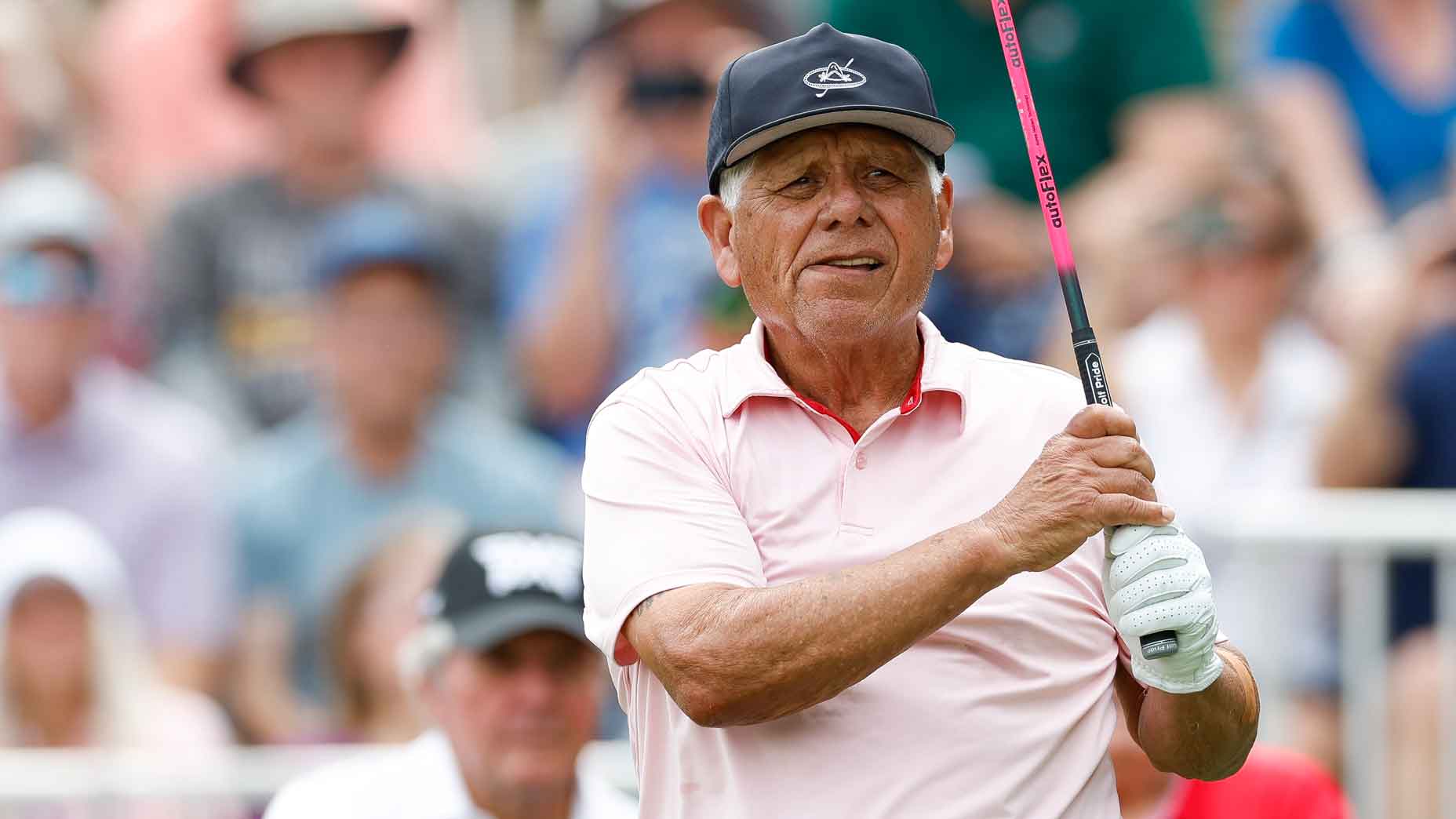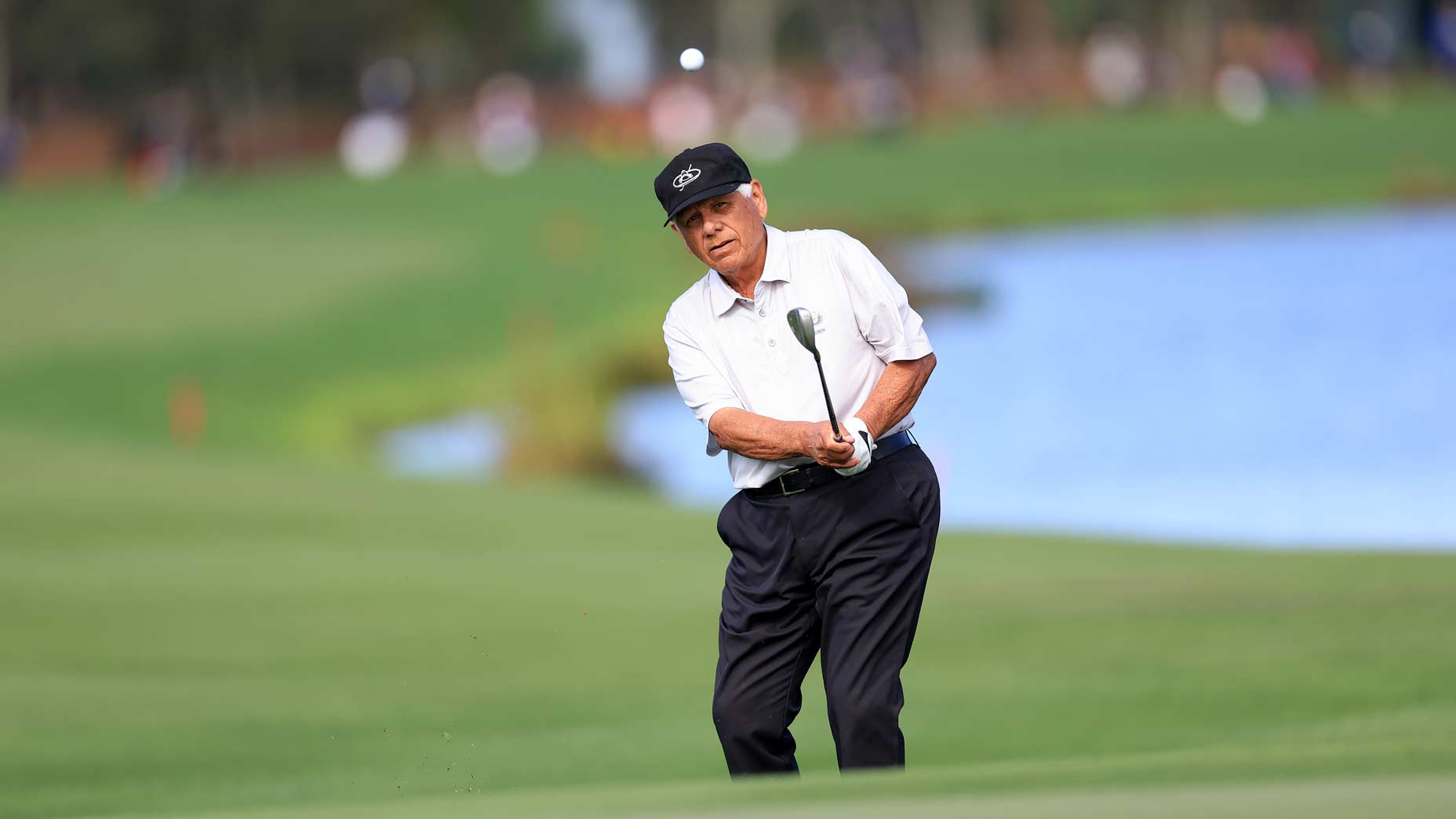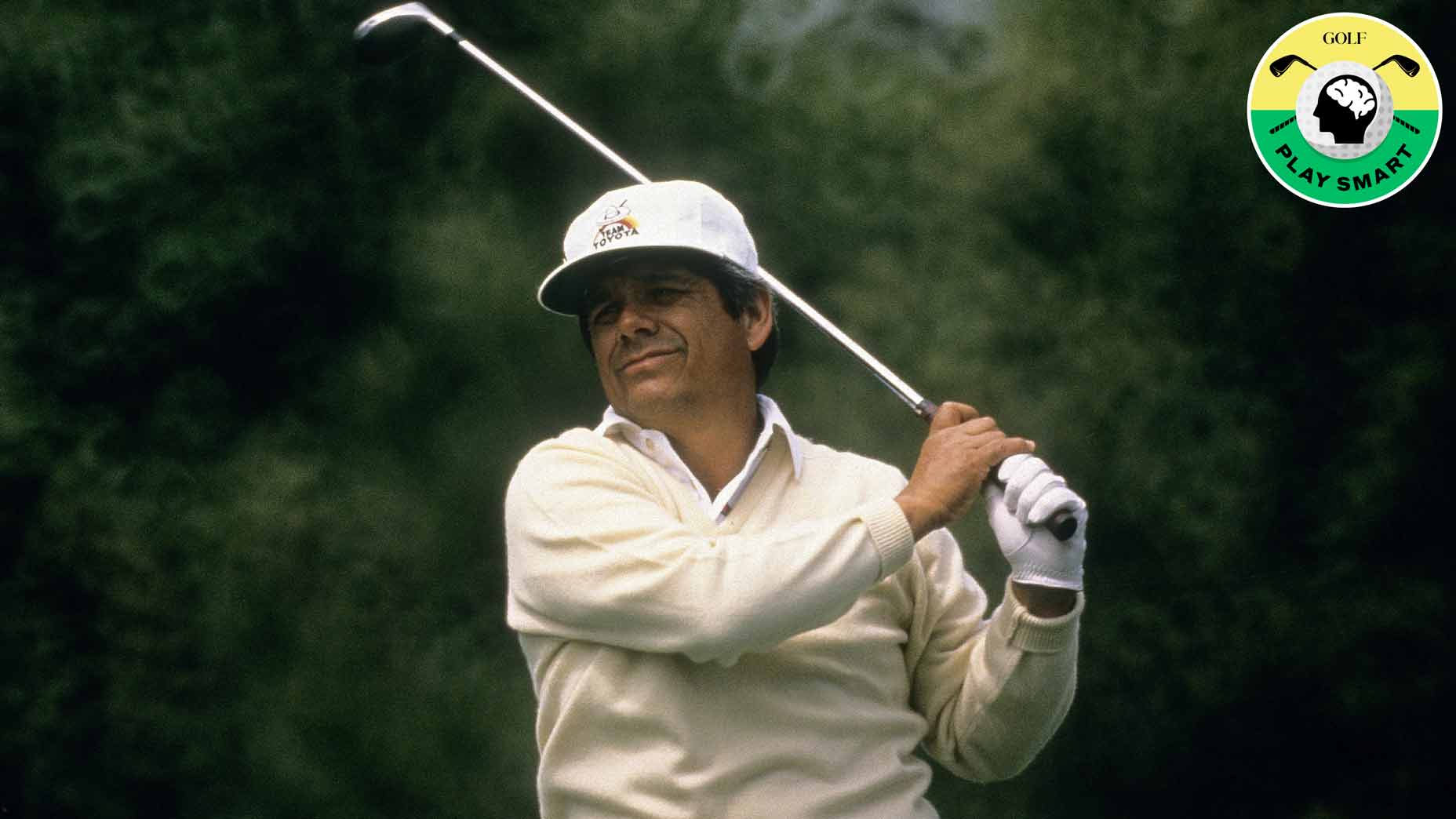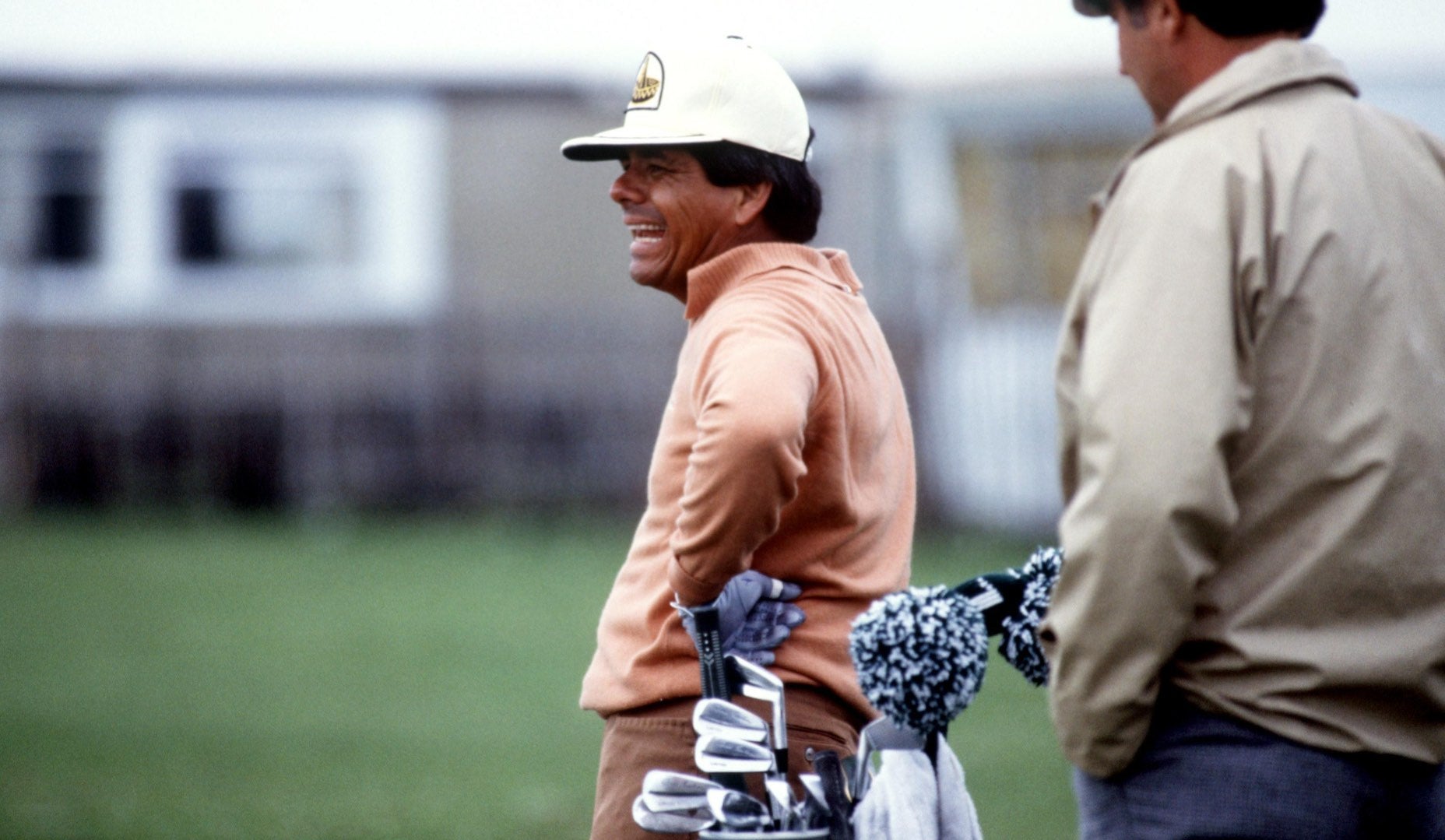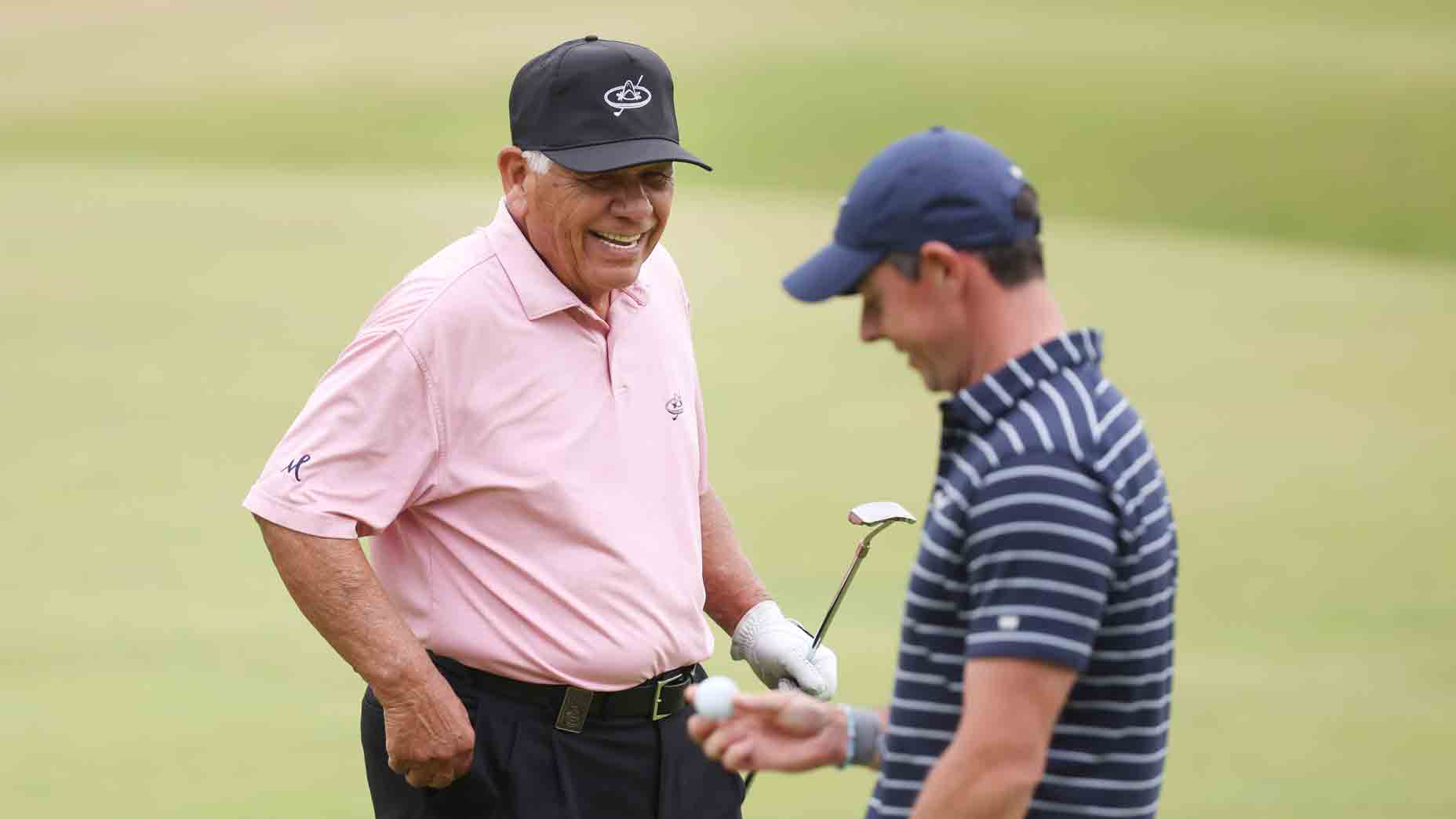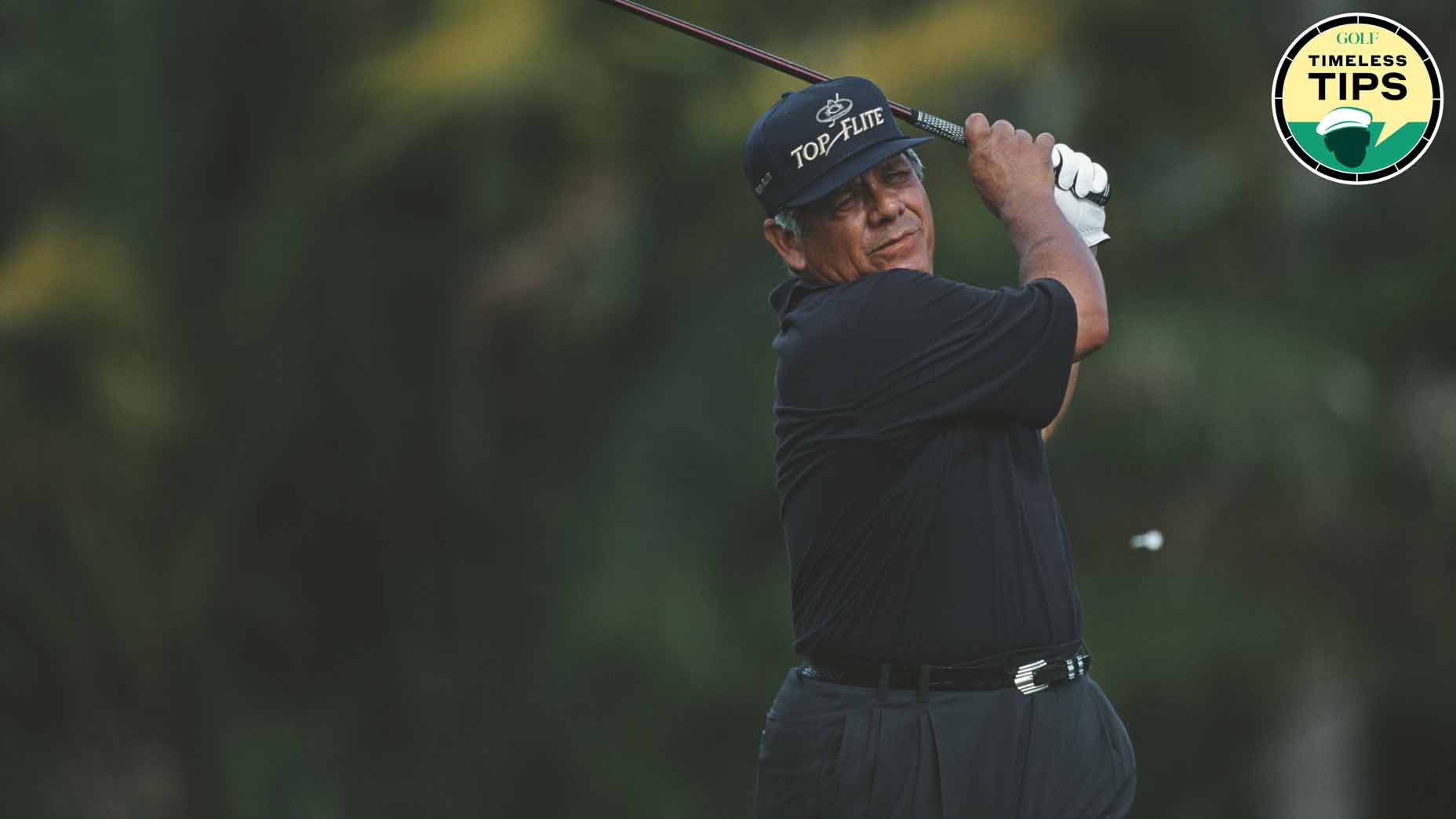‘I chased the money’: Lee Trevino says this decision cost him wins
- Share on Facebook
- Share on Twitter
- Share by Email
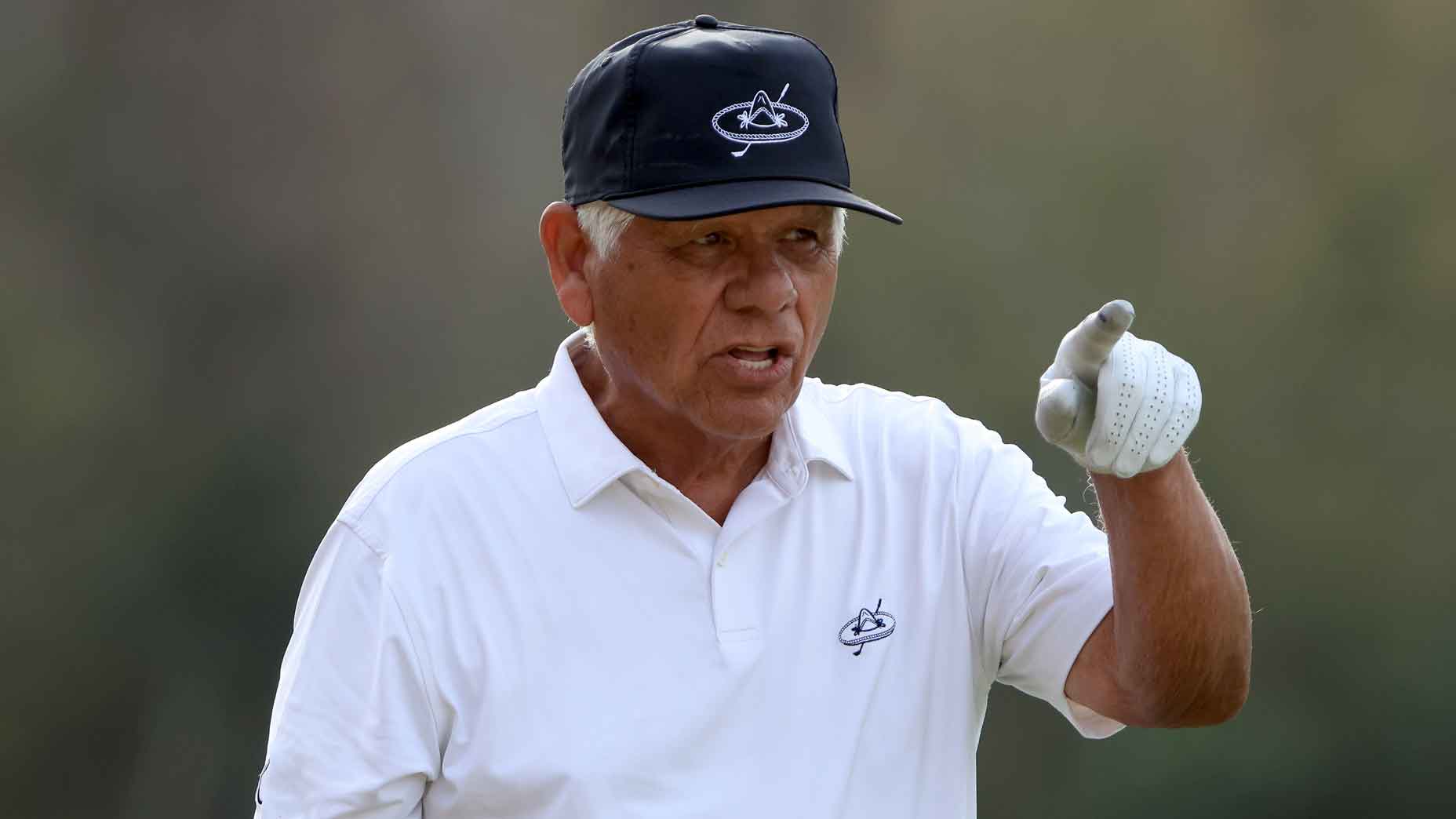
Lee Trevino riffed on gear, what TV broadcasts get wrong and (much) more at the Simmons Bank Championship.
Getty Images
Two years ago, Lee Trevino joked he “came along too early” in his golf career, referring to the piles of money pros were making on both LIV Golf and the PGA Tour.
The same could be said for equipment deals.
Like everything else in the golf world over the last few decades, endorsement deals with equipment companies have evolved, too. Notably, they’ve become more lucrative.
So, who would Trevino sign with if he had a contract in today’s golf world?
The clever bunker hack Lee Trevino learned from Seve BallesterosBy: Nick Dimengo
He riffed on that topic — and lots, lots more — at the Simmons Bank Championship at Pleasant Valley Country Club in Little Rock, Ark., on Tuesday. The tournament is the second stop of the PGA Tour Champions Playoffs schedule; the top 36 players will advance to the Charles Schwab Cup Championship two weeks from now at Phoenix Country Club.
Trevino, 84, was on-site for festivities on Tuesday and planned to play in the pro-am on Wednesday. But back to our question: whose clubs and/or ball would Trevino use?
Naturally, he had a lot to say. (And who are we to cut off Lee Trevino?)
“Well, you know, they’re making some very, very good golf clubs now,” he began. “They’ve gotten to the point to where these companies, they’re competing with each other. Back in my day, I chased the dollar naturally, simply because we didn’t have that much as far as prize money was concerned. We were talking about that just a moment ago. In 1971, I won seven tournaments and then I finished high in a lot of tournaments and I won a total of $153,000. That was when you won a tournament back then, a regular tournament, you won 20 percent of the purse, which generally was $100,000. Got a little bit.
“It’s tough now with the golf clubs because there’s so much money now that you play for, so much prestige. The big tournaments mean so much, the rankings mean so much that I think I would have a lot of trouble playing an equipment company. I think I would try ’em all and just play whatever’s best. So I might have a 3-wood that I can hit that somebody else makes, or a driver, irons. I remember when I started the Tour, I had seven different makes in my bag. I didn’t have a complete set of clubs, but I didn’t have a contract with anybody. Not until 1971 when I got Top Flite, when I got Spalding. They put a rule on you, they want you to use the driver, No. 1. If the driver’s not good, you’re taking the backseat.”
So his answer? Probably none. He’d be a rare gear free agent, like Brooks Koepka and Adam Scott, among others, elect to do now.
Trevino elaborated on the topic and said there was one time he took the gear contract money and it backfired on him.
“I took the backseat in Japan because I chased the money,” he said. “I remember endorsing a golf ball called Faultless and it was — the Faultless ball was a solid ball. We had it here in the U.S. and then we had one in Japan. I was loyal, and I think it cost me maybe some tournaments with it because it wouldn’t go as far and I couldn’t work it as well as I could the other golf ball. Golf balls today are manufactured a little bit different. They’re harder, they don’t spin as much, they don’t go as crooked as the balata did.”
Optimal gear or not, though, Trevino did all right for himself: 29 PGA Tour wins, including six major titles, and a spot in the World Golf Hall of Fame.
Latest In Gear

Josh Berhow
Golf.com Editor
As GOLF.com’s managing editor, Berhow handles the day-to-day and long-term planning of one of the sport’s most-read news and service websites. He spends most of his days writing, editing, planning and wondering if he’ll ever break 80. Before joining GOLF.com in 2015, he worked at newspapers in Minnesota and Iowa. A graduate of Minnesota State University in Mankato, Minn., he resides in the Twin Cities with his wife and two kids. You can reach him at joshua_berhow@golf.com.


